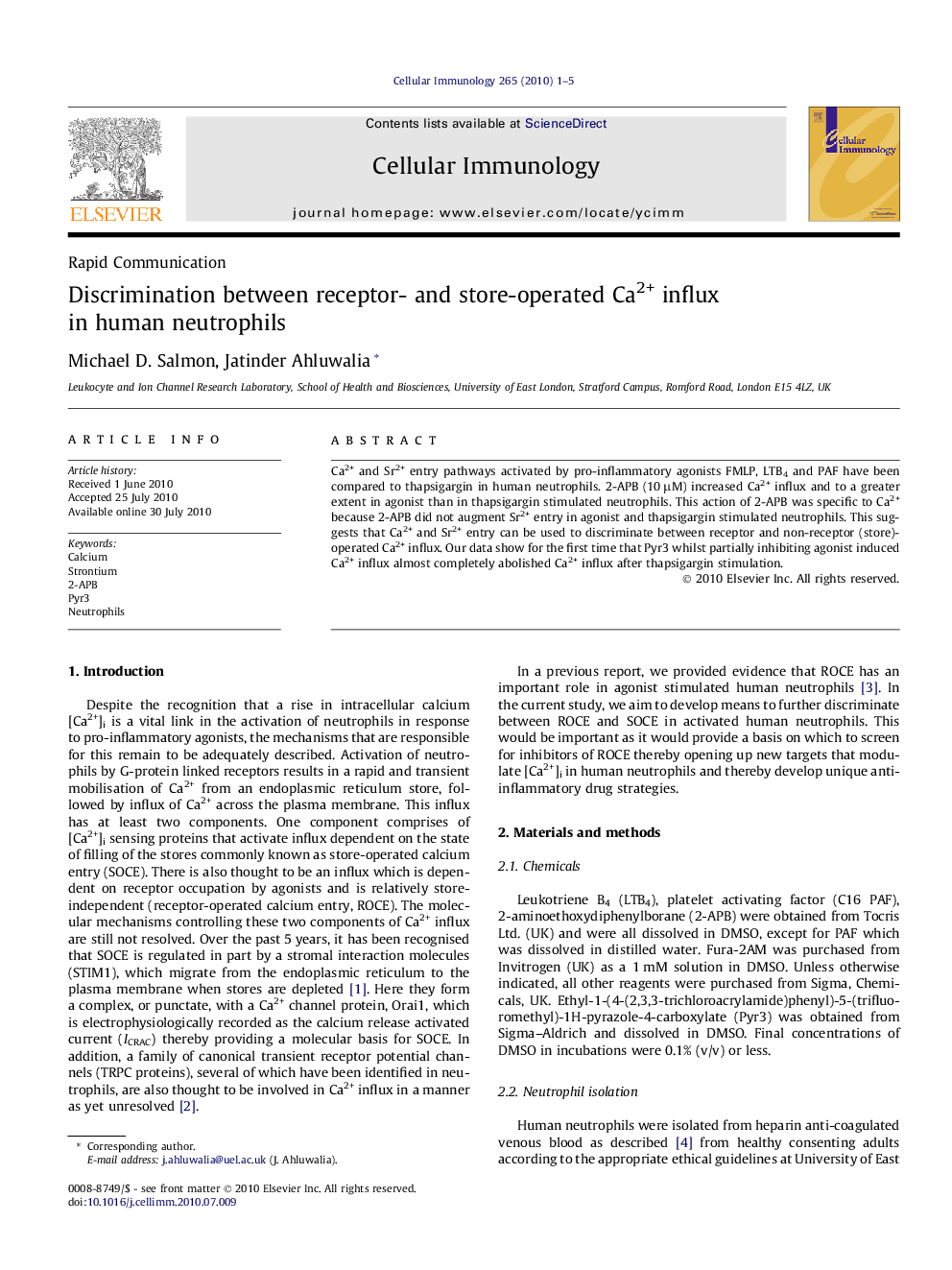| Article ID | Journal | Published Year | Pages | File Type |
|---|---|---|---|---|
| 2167550 | Cellular Immunology | 2010 | 5 Pages |
Abstract
Ca2+ and Sr2+ entry pathways activated by pro-inflammatory agonists FMLP, LTB4 and PAF have been compared to thapsigargin in human neutrophils. 2-APB (10 μM) increased Ca2+ influx and to a greater extent in agonist than in thapsigargin stimulated neutrophils. This action of 2-APB was specific to Ca2+ because 2-APB did not augment Sr2+ entry in agonist and thapsigargin stimulated neutrophils. This suggests that Ca2+ and Sr2+ entry can be used to discriminate between receptor and non-receptor (store)-operated Ca2+ influx. Our data show for the first time that Pyr3 whilst partially inhibiting agonist induced Ca2+ influx almost completely abolished Ca2+ influx after thapsigargin stimulation.
Keywords
Related Topics
Life Sciences
Biochemistry, Genetics and Molecular Biology
Cell Biology
Authors
Michael D. Salmon, Jatinder Ahluwalia,
